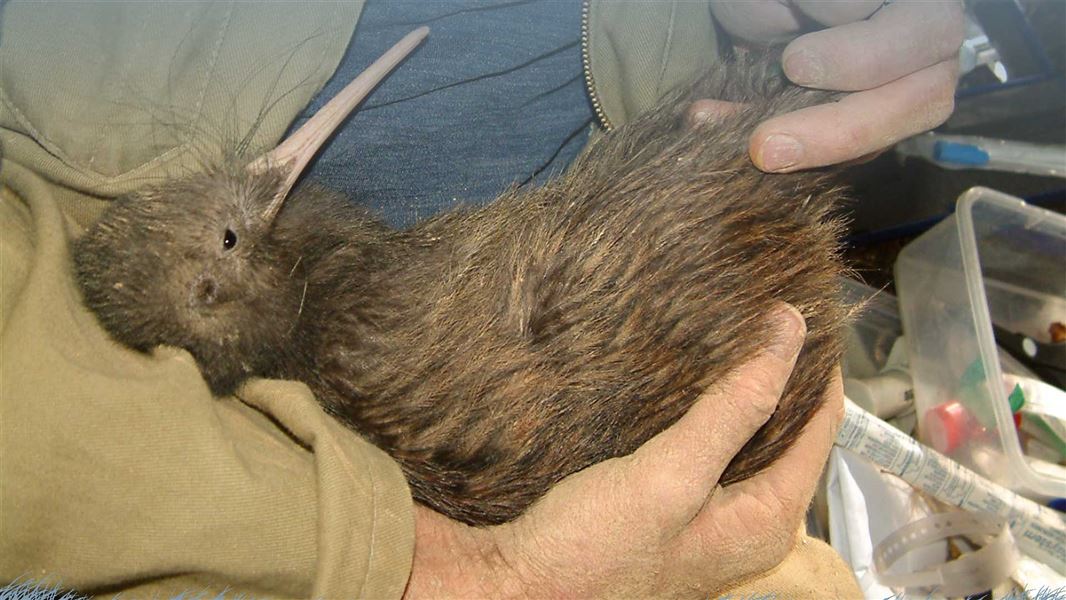Operator certification
DOC is responsible for the management and protection of wildlife, including kiwi. The Kiwi Accredited Handler (KAH) scheme ensures that operators are competent for a range of kiwi management skills.
All operators who physically interact with kiwi for management, need to be registered with the KAH scheme. Certification levels for different KAH skills are granted according to the requirements set out in the most recent Kiwi Best Practice Manual.
However, certification does not give you permission to capture, handle or mark birds. It's your responsibility to ensure that you're working under a valid Wildlife Act authorisation, supplied by DOC's Permissions Team.
The Kiwi Best Practice Manual describes the standards and details of 'best practice' that must be followed by every operator in New Zealand.
KAH Certification levels
Unaccredited trainee/Level 1
Unaccredited trainees (Level 1) may only operate under the direct supervision of a trainer/Level 3 operator who is certified at trainer level for the KAH skill they are undertaking.
Accredited trainee/independent operator/Level 2
Accredited trainees (Level 2) are considered competent to undertake the KAH skills for which they are signed off as accredited/Level 2.
Trainer/Level 3
Level 3 operators have extensive experience for the KAH skills listed on their certificate. Privileges and responsibilities include: training, supervising, and supporting trainees, overseeing projects, submitting marking data and ensuring that the necessary Wildlife Act authorisations are in place.
How to apply for certification
- Complete the KAH trainee application form (DOCX 335K)
- Attach to an email along with the evidence required for the skills requested (outlined by the latest Kiwi best Practice Manual)
- .Send the email to the Kiwi Handler inbox: Kiwihandler@doc.govt.nz
To apply for KAH non-marking skills
To become listed and apply for KAH certification, follow the process above.
To apply for KAH marking skills
Kiwi marking skills include attaching bands or wing tags and inserting transponders. All avian marking in New Zealand is managed via the Bird Banding Office.
How to become a certified bander has information on how to apply for Level 2/3 marking certification.
Application processing time
The processing times provided here are a guide. If for any reason the processing times fall outside of these guides, we'll email you and inform you of the delay.
Once all required documentation has been collated, the processing time for non-marking KAH skill applications is 20 business days.
Details on the Banding Office processing time of KAH marking applications can be found at: How to become a certified bander.
Data submission
Annual report
Every year all KAH operators must submit an annual report around July detailing the number of times they have undertaken each of the KAH skills for a KAH year. This is to be reported on regardless of the certification level of the operator for each skill.
The ‘KAH year’ to be reported on covers the Kiwi breeding season, which goes over the calander year. The KAH year is set from 1 July of the year prior to 30 June of the year. For example: the 2023 KAH year was 1 July 2022 – 30 June 2023.
KAH annual report form 2025 (XLXS, 59K)
Marking and monitoring kiwi data
Marks include (but are not limited to) metal bands, transponders and wing tags.
All data pertaining to a marked kiwi, such as marking, re-marking, sighting, handling or found deceased should be reported promptly to the national database for marked wildlife.
Kiwi Accredited Handler documents
The New Zealand Kiwi Recovery Group has developed best practice guidance and advice notes for kiwi operators:
- Kiwi Best Practice Manual
- Kiwi Accredited Handlers' document folder - includes operator-specific notices (Note: This links to our Cerberus download site. Get help on downloading files.)
Contact
If you have questions about:
- the KAH certification system and application process, email: kiwihandler@doc.govt.nz
- marking and submitting marking data, email: bandingoffice@doc.govt.nz
Address for queries:
National Banding Office
PO Box 108
Wellington 6140
